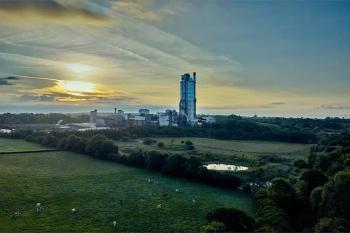
Supercritical CO2 – the next big thing?
An integrally geared CO2 compressor by Man Diesel & Turbo
Supercritical CO2 received plenty of attention at the ASME International Gas Turbine Institute’s (IGTI) Turbo Expo in Copenhagen this week, and merited dozens of well-attended presentations. Carbon dioxide is said to be at a supercritical fluid state when temperature and pressure reach their critical point (31°C and 73 atm). In this state, it has the properties of gas and liquid, and can be used in applications with any heat source, including solar, fossil fuels, nuclear, waste heat and geothermal. The general idea is to improve efficiency by transferring exhaust thermal energy into power via heat exchangers.
“Supercritical CO2 is the future,” said Darryn Fleming of Sandia National Labs. “It can improve power efficiency.” Sandia Labs is building a 1 MW test loop for closed Brayton Cycle power generation development. It is expected to be operational in July, 2012. This work is pushing the limits of current heat exchanger technology. As a result, Sandia is engaged in working out failure modes for heat exchangers and has several corrosion studies ongoing. It is also working on bearings and seals that can deal with these pressure and temperature extremes. According to Fleming, the limiting factor of this technology is going to be the heat exchangers.
Pratt & Whitney Rocketdyne (PWR) is another organization investing heavily in supercritical C02. Gregory Johnson of PWR briefed the audience on a recent design study done on behalf of Argonne National Lab to figure out the specifics of a 1000 MW nuclear system which would include a supercritical C02 cycle coupled to a large liquid metal nuclear reactor (LMR). It would have an inlet temperature of 333°C and a 488°C outlet temperature. Johnson said effective ways of coupling a SCO2 cycle to LMR are being investigated.
PWR considered several possible configurations including 2 x 500 MW and 4 x 250 MW turbines. In the end, the preferred design is the 1 x 1000 MW turbine, driven by turbine costs and plant footprint. A split shaft arrangement has been recommended with one turbine driving a generator and another driving the compressors.
With a single shaft, a substantial amount of additional piping would be required and efficiency would be lower. On the other hand, a split shaft design would require fewer compressor stages and less piping, as well as smaller turbines and greater efficiencies. The costs, however, would be higher.
Printed circuit heat exchangers have been preferred in the past, but they have size limitations. So designers are turning to plate and sheet heat exchangers as well as double enhanced sheet and tube models.
Newsletter
Power your knowledge with the latest in turbine technology, engineering advances, and energy solutions—subscribe to Turbomachinery International today.





